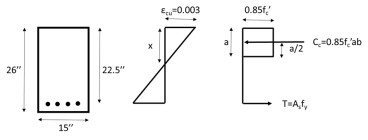Coupling
Coupling refers to the practice of connecting or linking separate structural elements or systems to enhance their overall performance. This approach is often used to create complex and integrated structural solutions that can address specific engineering challenges or provide added benefits in terms of load distribution. Coupling techniques are commonly employed in multi-story buildings, bridges, and industrial facilities to optimize design outcomes. One common example of coupling in structural systems is the use of shear walls and moment frames in buildings located in seismic regions. In bridge construction, coupling can involve connecting separate bridge segments, such as cantilevered spans or cable-stayed sections, to create a continuous and stable transportation route. Coupling is a valuable tool in structural engineering, allowing engineers to tailor solutions that meet the appropriate requirements.
Want to read more like this?
Walls
Sep, 14, 2023 | EducationWalls can serve as integral components of a structural system in structural engineering. They provi...
Structural systems
Sep, 14, 2023 | EducationStructural systems refer to the arrangement of structural elements within a building or structure...
Structural Analysis
Sep, 16, 2022 | EducationThe prediction of the response of structures when they are subjected to specified arbitrary extern...

Types of bridges
Jun, 01, 2023 | EducationArch Bridge An arch bridge is a type of bridge that uses a curved, semi-circular structure, kno...
Bridge Design
Jan, 01, 2019 | EducationBridge design is the process that involves the conceptualization, the strategic planning, and the...
Continuous structures
Sep, 07, 2023 | EducationContinuous structures are also known as continuous systems and refer to a type of structural arran...

Bentley Webinar Series: Transforming Engineering with Bentley's Advanced Structural Solutions
Aug, 12, 2024 | EventJoin this unique Bentley webinar series to explore STAAD.Pro, Structural Worksuite and RAM Connecti...

Bentley Webinar: Achieving Enhanced Structural Detailing and Connection Design for Industrial Structures
Jun, 10, 2025 | EventStructural engineers often need solutions for analyzing industrial structures, detailing, and conne...

RAM Structural System
Mar, 30, 2022 | SoftwareTrending

Diaphragms
Structural stability

Nominal flexural strength of a reinforced concrete beam

Calculate the Maximum Shear Stress

Truss deflection using the unit load method

Overhanging beam: shear force and bending moment calculation

Calculation Example – Beam with inner hinge (Part A). Find the Reactions

